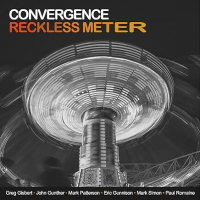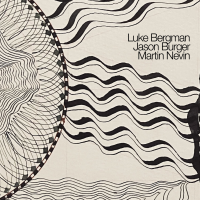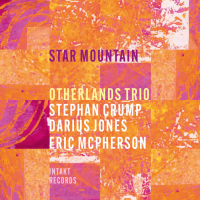Home » Jazz Articles » Album Review » Charlie Parker, Dizzy Gillespie, Bud Powell, Charles Min...
Charlie Parker, Dizzy Gillespie, Bud Powell, Charles Mingus, Max Roach: Hot House: The Complete Jazz at Massey Hall Recordings
Oh, it was the only time that Bud Powell, Dizzy Gillespie, Charlie Parker, Max Roach, and Charles Mingus were reputedly all together on the same stage, which is certainly something. Parker, Gillespie, and Roach play anywhere from exceptional to impressive. Bud Powell—even though he had just been released from psychiatric care at Bellevue Hospital in New York and was under custodial supervision—got off some inspired choruses. Charles Mingus—who was not the original choice for the bass chair, that was Oscar Pettiford—was so under-recorded that he made off with the tape—his and Roach's—to overdub his bass part, thus inadvertently saving a record of the event. Calling the band "tight" is a bit of an exaggeration, to put it mildly. Gillespie spent at least a few minutes trying to catch up on the progress of a Jersey Joe Walcott-Rocky Marciano rematch whose televised presence in part accounted for the small house that night. Because of an international snafu with musician's union rules in Canada, the concert remained touch and go until the last minute. So, what is the big deal? The story is in the telling and the legend in the making.
At some point, all the cats must have played better. But they did not do it together under such fraught, crazy, unlikely and unrepeatable circumstances. By 1955, Parker was dead, removing him from any possible repetition. In 1959, Bud Powell was in Paris, a sad reminder of what he had been a decade earlier. Dead, ruined, somewhere else, on to better (or different) things. How could Massey Hall, "Canada's Carnegie Hall," not have become legendary? It was one and done. Another one of those tantalizing bop could-have-beens. The labyrinthine history of the subsequent releases on various labels only adds to the mystique. So, is the Craft edition the definitive one?
Of course, it is about the music. The Mingus overdub is a separate issue. Is this what Mingus played, would have played, or should have played on further reflection? One could, in theory, run the original and the overdub simultaneously to guess. Whatever the case, Mingus not only got back into the act, but sped things up a bit. For instance, "his" overdubbed version of "Wee" is a full 3 seconds faster than the version without overdub (6:29 versus 6:32). So, no, it is not an illusion that one is hearing a slightly different Massey Hall with Mingus. Listeners may wonder which version "really" sounded in Plato's Cave that night; but somehow Mingus sounds overcaffeinated. Gillespie, Parker, and Roach play so much at times that they occasionally seem to be caricaturing themselves —well known licks and quotes draw occasional laughter from a clued-in audience, not to mention the on-stage banter between the musicians themselves. Parker on his plastic horn and Gillespie with a technique well beyond nearly anyone else's: it is all fabulous. And, yes, it is the stuff of legend. By virtue of its mere occurrence, if nothing else. That is the real miracle—that the concert came off at all and that, seventy years on, there is a solid record of it.
And the Craft Vinyl production puts it all out there, theme and variations. If not the "definitive" version, then, what would be? This is a 3 LP 24-bit restoration by engineer Paul Blakemore. Craft describes the entire package as the 19-track box set, includes the quintet's original 12-inch Debut Records LP release (featuring bass overdubs by Mingus), plus all six quintet tracks without overdubs, as well as performances by the Powell/Mingus/Roach trio, and Roach's "Drum Conversation." . There are rare photos from the evening, plus two essays. The first is by David Scharf, whose father, Alan Scharf, was among the concert's organizers and was one of the photographers who documented the event. The second was written by Don Brown, an attendee at the show, who provides a play-by-play account. After forty odd years of issues, reissues, anthologies and compilations of the event on assorted labels, a confusing project to reconstruct in itself, it is possible to approach the Massey Hall Recordings systematically and rationally. Who could ask for anything more? What else is a definitive version supposed to be?
Track Listing
Perdido; Salt Peanuts; All the Things You Are/52nd Street Theme; Wee (Allen’s Alley); Hot House; A Night in Tunisia; Drum Conversation; I’ve Got You Under My Skin; Embraceable You; Sure Thing; Cherokee; Hallelujah; Lullaby of Birdland; Perdido; Salt Peanuts; All the Things You Are; Wee (Allen’s Alley); Hot House; A Night in Tunisia.
Personnel
Charlie Parker
saxophone, altoDizzy Gillespie
trumpetBud Powell
pianoCharles Mingus
bass, acousticMax Roach
drumsAlbum information
Title: Hot House: The Complete Jazz at Massey Hall Recordings | Year Released: 2023 | Record Label: Craft Recordings
Tags
PREVIOUS / NEXT
Support All About Jazz
 All About Jazz has been a pillar of jazz since 1995, championing it as an art form and, more importantly, supporting the musicians who make it. Our enduring commitment has made "AAJ" one of the most culturally important websites of its kind, read by hundreds of thousands of fans, musicians and industry figures every month.
All About Jazz has been a pillar of jazz since 1995, championing it as an art form and, more importantly, supporting the musicians who make it. Our enduring commitment has made "AAJ" one of the most culturally important websites of its kind, read by hundreds of thousands of fans, musicians and industry figures every month.


























